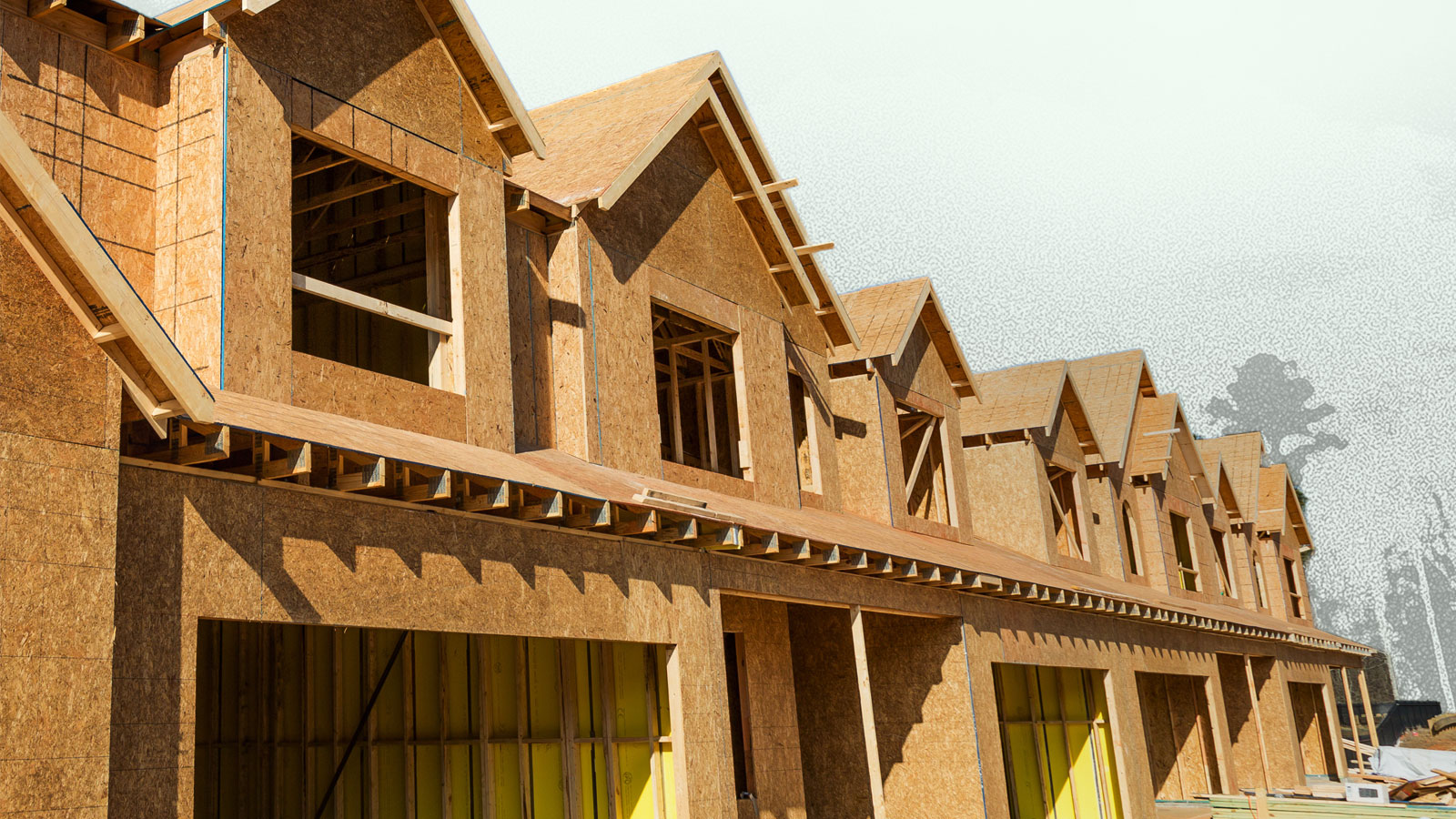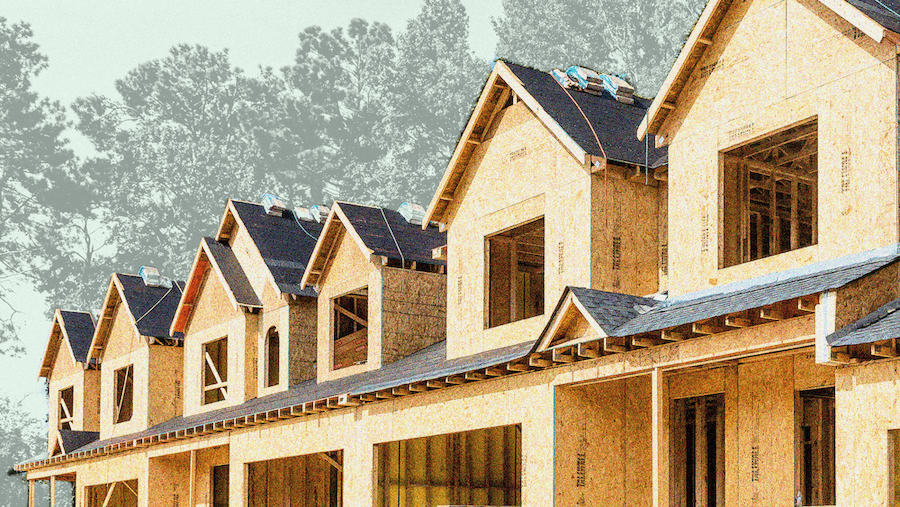7 Big Ideas to Make Canadian Homes More Affordable
Bringing in more skilled trades from other countries and reforming zoning are just two of the proposals a leading Canadian economist is suggesting to restore Canadian housing affordability.
By Josh Sherman | 5 minute read

Homebuilders in Canada face some of the longest approval delays for new developments in the world, and that will need to change if Canadian housing affordability is to improve, a leading economist argues.
Many experts agree the high cost of housing in Canada mainly boils down to a serious supply shortage.
The obvious solution, then, is to build more homes. But is it so simple? Whether it’s a labour shortage in the construction industry or the heightened-interest-rate environment, there are multiple headwinds to ramping up homebuilding activity and improving Canadian housing affordability. However, recently, one economist laid out a seven-step plan to solve the country’s housing shortage. It goes into the hows of building more homes, while explaining other factors such as the importance of building certain types of homes over others.
“The solutions will be many and complex as well,” writes Robert Hogue, Assistant Chief Economist at RBC, in his report titled The Great Rebuild: Seven ways to fix Canada’s housing shortage. “Ultimately, [the solutions] will need to close the supply-demand gap and tilt the market equation toward an abundance of supply—to bring meaningful home price and rent relief,” he continues. Here are his seven big ideas for Canadian housing affordability, beginning with addressing those persistent labour challenges in the building sector.
1. Get More (Construction) Boots on the Ground
Everything that could grow the construction-labour pool should be explored, suggests Hogue, underscoring the importance of the issue: “Canada could need more than 500,000 additional construction workers on average to build all homes needed between now and 2030—and even more than that in the short term to meet peak growth in demand.” Everything could include the following:
- To plug a hole in the stream of aging labourers heading for retirement, Hogue says employers should dangle the carrot of special benefits or flexible work arrangements to keep workers on the job longer.
- Provinces also need to attract more students to the trades, and they could start with advertising campaigns and partnering with high schools.
- The federal government should put more emphasis on allowing immigrants in the trades to enter the country. From 2016 to 2021, just 2.4% of landed immigrants were certified in the trades, compared to nearly 10% in the 1980s.
“New approaches must be pursued to increase the number of homes produced per worker. This won’t be easy.”
2. Harness Innovation and Building Tech
The real estate sector should be embracing new technologies to build homes more efficiently. So-called proptech — that’s a portmanteau of real estate and technology — is already attracting a lot of attention in some circles, such as with self-healing concrete or 3D-printed homes. But more could be done on a wider scale, Hogue suggests: “New approaches must be pursued to increase the number of homes produced per worker. This won’t be easy.” Hogue cites a couple of examples:
- One way to speed up homebuilding could be to incorporate more modular or prefab homes. (These dwellings have components that are either partially or fully built in factories and then hauled to construction sites and rapidly pieced together.)
2. Allow pre-approved building designs, so builders don’t need to go through lengthy approvals processes every time they want to create a new housing development.
3. Make Development Approvals Faster
Canada has some of the longest approval delays in the world. Out of 34 OECD countries, Canada ranks 33rd for how long it takes land owners to acquire a building permit. “The rules and regulations governing housing development and construction—often well-meaning when introduced—have accumulated greatly over the years,” writes Hogue. “They now represent a complex and cumbersome set of rules that add tremendous time and costs to projects.”
The path to faster approvals includes cutting certain studies, streamlining public consultations, and simplifying building codes, right up to exempting certain buildings (say, with 10 units or fewer) from the application process altogether.
4. Bring on Zoning Reform
Until recent provincial and municipal rule changes — such as Toronto council’s decision last year to change zoning rules to allow multiplex housing citywide — Hogue says 69% of Toronto’s net residential land was limited to single-family homes. More municipalities should act as Toronto did with multiplex zoning last year, the economist suggests. Looser zoning paves the way for more so-called missing middle housing, and experts agree this form of gentle density — a scale of housing that falls between single-family homes and mid-rise buildings — should be part of the solution to Canadian housing affordability challenges.
5. Cut Building Costs
What can the government directly do about building costs? Well, Hogue notes that in some Greater Toronto Area cities, for example, development charges can go north of $100,000 for a single condo units. Local policymakers could address these costs by lowering charges. “[M]unicipalities should consider waiving development charges and parkland cash for in-fill projects that don’t require material additional infrastructure investment,” Hogue recommends.

Find the Right REALTOR® for You
We'll match you with a proven agent in your area.
6. Make Rentals a Priority
Building more homes isn’t enough — Canada must also build the right types of housing to meet demand, and that means lots of rentals as potential buyers continue to get priced out of ownership. “Stretched affordability will drive up rental housing demand to the point where housing construction must almost be entirely dedicated to the sector,” says Hogue, who proposes several ideas to spur more rental construction:
- Get post-secondary institutions to build more housing for students so that they aren’t adding demand to the primary rental market.
- Citing the federal government’s removal of GST on new apartments, Hogue says governments should continue to incent rental construction.
- Set aside public land for affordable-housing projects.
- Waive development charges on affordable housing.
- Avoid rent control, because it causes investment in rental-housing to dry up — meaning it doesn’t get built.
7. Add More Units to Existing Homes
In addition to constructing new houses and buildings, Hogue suggests Canada should also look at the homes it has already built to see if any more density can be packed in. Options such as laneway suites, basement apartments, and converting vacant offices to housing should all be on the table. As well, further restricting short-term rentals — which some jurisdictions, such as Toronto — are already doing could provide more housing options.
“In Ontario alone, over half of homeowners are over-housed (i.e., have too many bedrooms). Three-quarters of them are seniors,” Hogue points out. “There could be ways to encourage households with extra rooms to rent them out to students, for example.”
Josh Sherman
Wahi Writer
Become a Real
Estate Know-It-All
Get the weekly email that will give you everything you need to be a real estate rockstar. Stay informed and get so in the know.
Yes, I want to get the latest real estate news, insights, home value
estimates emailed to my inbox. I can unsubscribe at any time.






